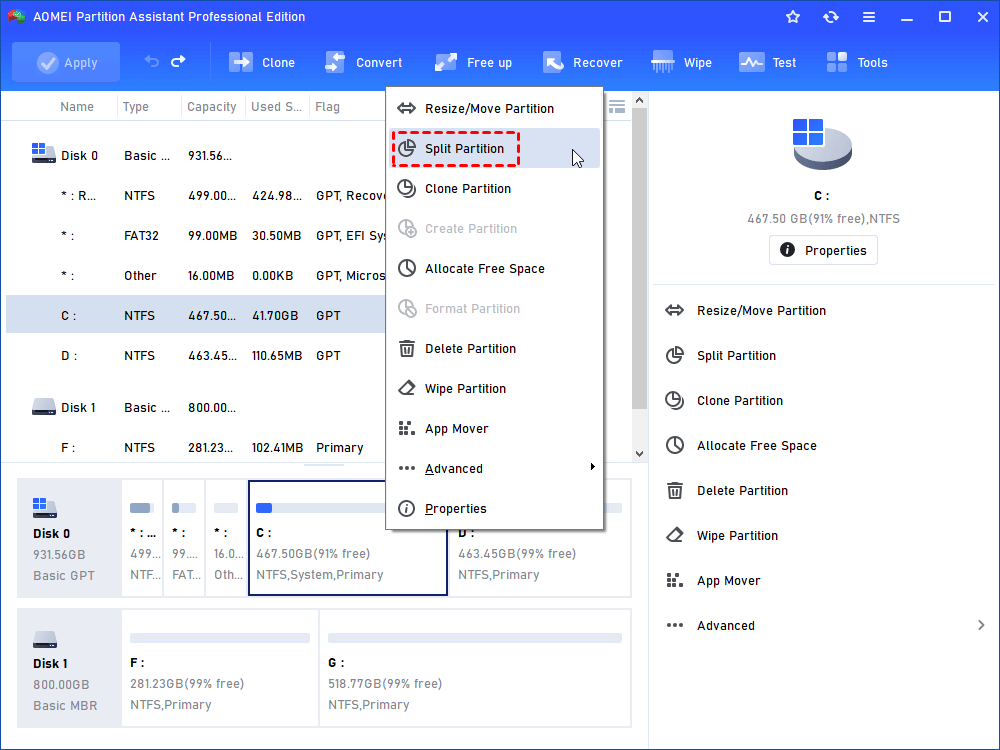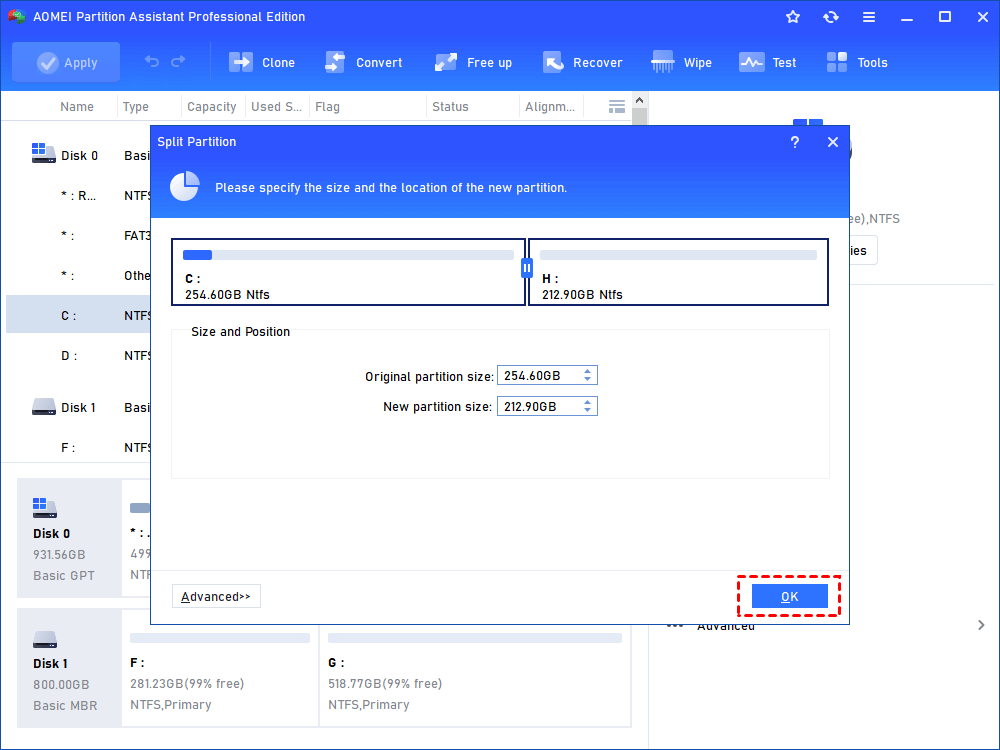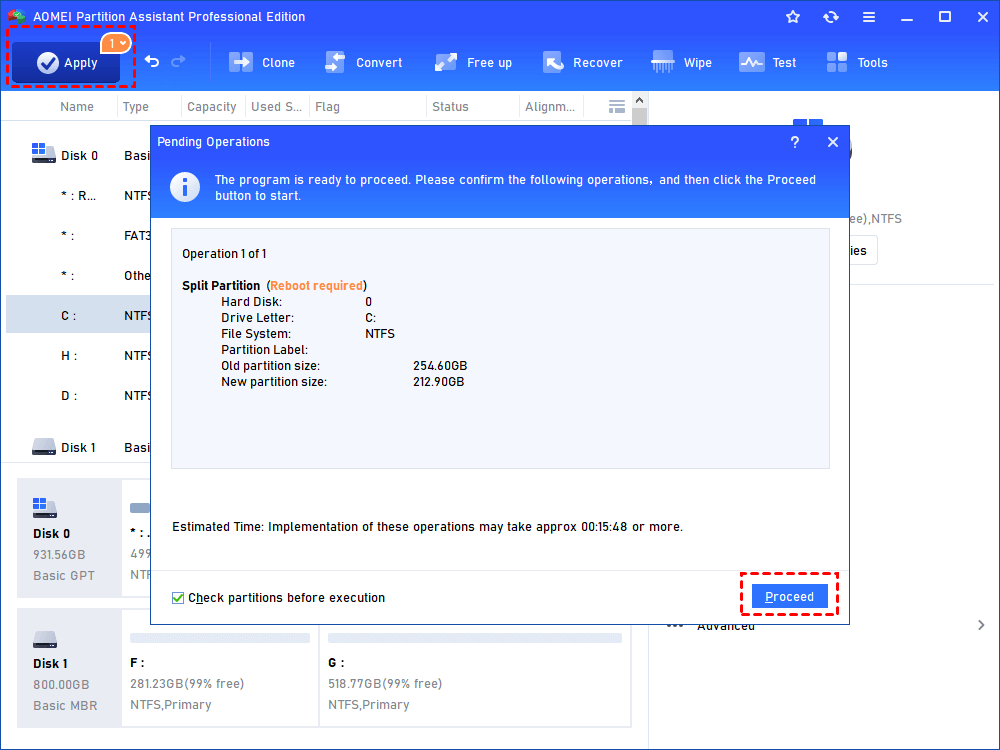Why Partition Hard Drive in Windows 10, 8, 7? [Four Reasons]
Why partition hard drive? Should I partition my hard drive? To answer these questions, refer to the post to realize what does partition a hard drive mean and how to partition.
▶ What is partitioning hard drive?
▶ Why partition hard drive?
▶ How to partition hard drive in Windows [Two ways]?
▶ Q & A about partitioning hard drive
What is partitioning hard drive?
Before answering why partition hard drive, let’s get into partition. Partition, is an independent part on hard drive. If you want to restore files on hard drive, it should be partitioned at first. To partition a hard drive is to create of one or more individual parts on hard drive.
Why partition hard drive?
Generally, there mainly are three reasons for you to partition your hard drive in Windows.
◆ To use unallocated hard drive: As explained above, you can’t save files on hard drive if it is not partitioned. Thus, if your hard drive is unallocated and without partition, it’s rather necessary to partition it.
◆ For higher transfer rate: On hard disk drive, the outermost tracks have a higher transfer rate. Thus, if we put OS on the first partition and other files on the partition other than partition C, the OS can work more effectively.
◆ For dual boot when there is only one partition on hard drive: There are different operating systems. You may want to own dual boot on your hard drive. To achieve this goal, you can partition hard drive into different divisions for different systems.
◆ Isolating apps & files for data safety and easy management: If your system crashes, all data will be formatted after system restore, when there is only one partition on hard drive. And it’s not easy to find out the exact file if all kinds of files are stored on one partition. Then, why not make multiple partitions on your hard drive?
How to partition hard drive in Windows [Two ways]?
If you plan to partition your internal or external hard drive to enjoy the advantages of partitioning hard drive, you can employ the way to which you prefer listed in the following content.
☞ The first way: partition a hard drive with Disk Management
☞ The second way: partition a disk via a 3rd party partition manager
The first way: partition a hard drive with Disk Management
Usually, you can partition your hard drive within Disk Management via these steps:
Step 1. Press Windows + R key, input “diskmgmt.msc” and press Enter key.
Step 2. In Disk Management, right-click the partition on your hard drive, choose Shrink Volume.
Step 3. In the pop-up window, type the amount of space that you want to shrink by and click Shrink.
Step 4. Now, you’ll see there’s unallocated space behind C drive. Right-click it and choose New Simple Volume.
Step 5. Determine the information of the newly created partition with New Simple Volume Wizard. Then, you’ll see that there is a new partition behind C drive.
It seems that you can complete hard drive partitioning easily within Disk Management. However, in Disk Management you won’t be able to shrink FAT32 formatted external hard drive, format a large HDD to FAT32 file system, format hard drive with exFAT, Ext2, Ext3 or Ext4 file system.
The second way: partition a disk via a 3rd party partition manager
If you want to complete the operations that can’t be executed within Disk Management, you can turn to a wonderful third-party partition manager, AOMEI Partition Assistant Professional. It allows you to split C drive into two partitions simply and quickly, resize FAT32 partition without losing data, complete quick partition, and so on.
Now, free download its demo version to have a try!
Then, you can follow these steps to partition hard drive by splitting in Windows 10/8/7, XP, and Vista.
Step 1. Install and run PA Pro. In the main interface, right-click C drive and choose Split Partition.
Step 2. Specify the amount of new partition and click OK.
Step 3. Click Apply and Proceed to execute the operation.
After that, you have got a new partition located behind C drive.
✍ Notes:
▪ When there are four primary partitions on an MBR disk, if you want to split one of them, the partition that is being split will be converted to logical partition automatically.
▪ PA Pro is suitable for partitioning hard drive in Windows 10/8.1/8/7, XP and Vista. For users who are using Windows Server 2019/2016/2012 (R2)/2008(R2)/2003, PA Server can be helpful!
Q & A about partitioning hard drive
Apart from why partition hard drive or how to partition hard drive, you may also wonder the answers to these questions:
✐ Q: Should I partition my solid-state drive?
✐ A: SSD is different from HDD in physical structure. If you partition SSD for a higher transfer rate, there is no need to partition SSD. But if you own an SSD with large capacity, it’s OK to partition it for manage files conveniently.
✐ Q: Why can’t I create a partition on unallocated space?
✐ A: If there is unallocated space on the hard drive but you can’t create a new partition with it. This might be related to the partition style of your hard disk drive: MBR and GPT. When an HDD is formatted with MBR and already has 4 primary partitions or (3 primary partitions + 1 extended partition), you won’t be allowed to create another primary partition. To solve this issue, you can convert HDD to GPT.




